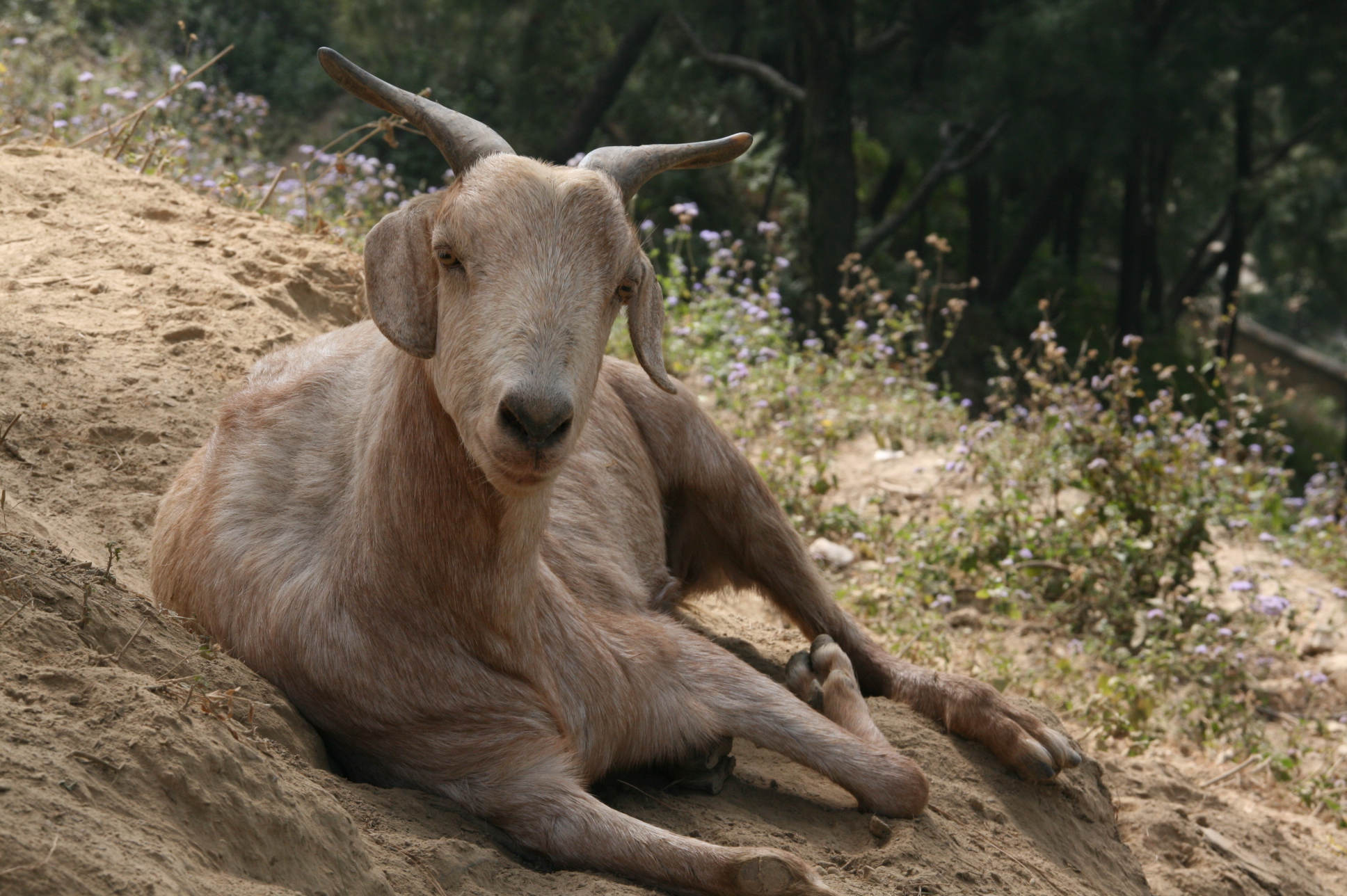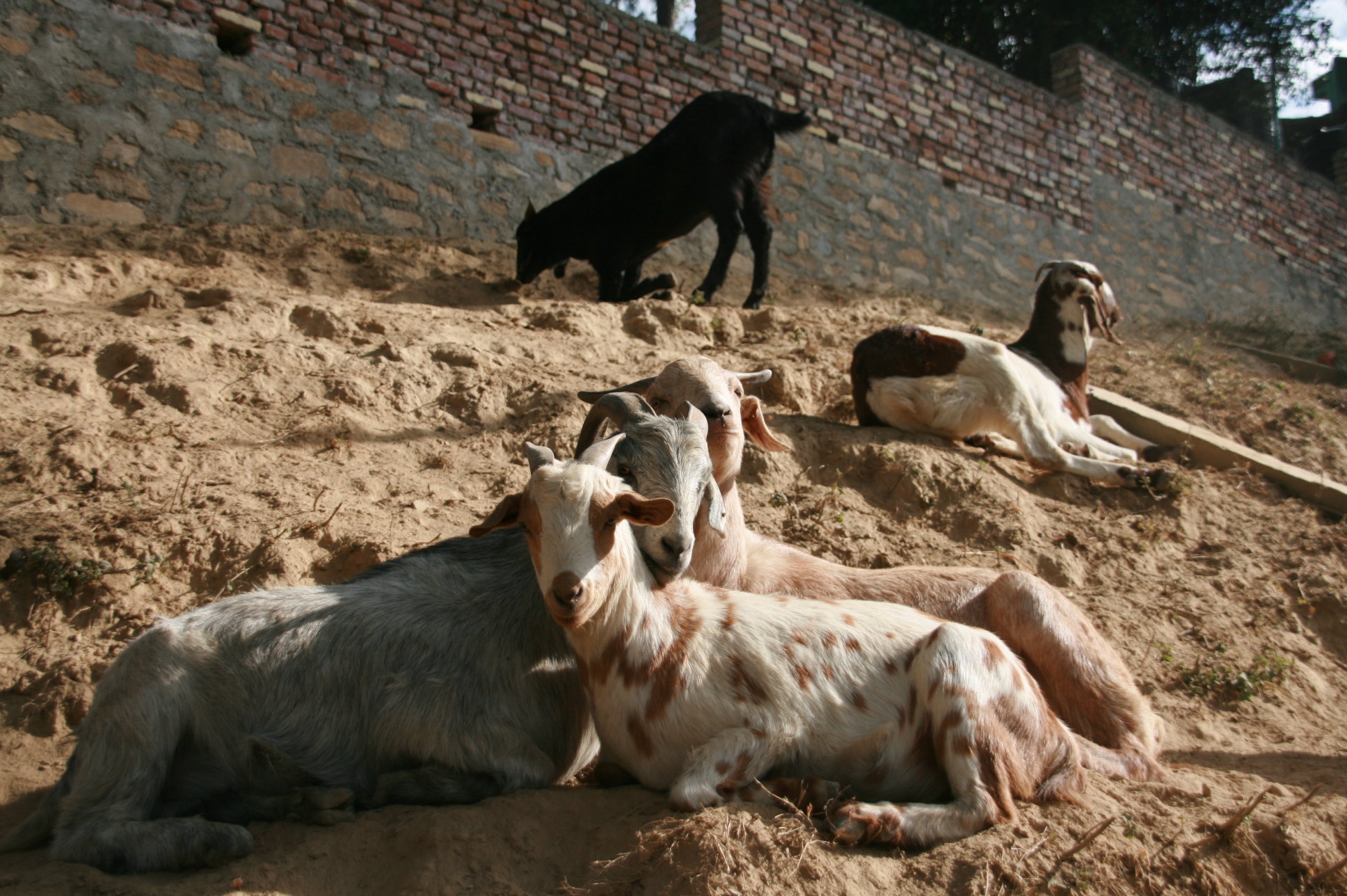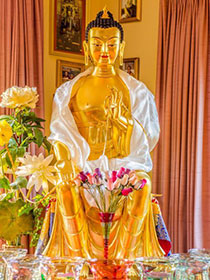- Home
- FPMT Homepage
Foundation for the Preservation of the Mahayana Tradition
The FPMT is an organization devoted to preserving and spreading Mahayana Buddhism worldwide by creating opportunities to listen, reflect, meditate, practice and actualize the unmistaken teachings of the Buddha and based on that experience spreading the Dharma to sentient beings. We provide integrated education through which people’s minds and hearts can be transformed into their highest potential for the benefit of others, inspired by an attitude of universal responsibility and service. We are committed to creating harmonious environments and helping all beings develop their full potential of infinite wisdom and compassion. Our organization is based on the Buddhist tradition of Lama Tsongkhapa of Tibet as taught to us by our founders Lama Thubten Yeshe and Lama Thubten Zopa Rinpoche.
- Willkommen
Die Stiftung zur Erhaltung der Mahayana Tradition (FPMT) ist eine Organisation, die sich weltweit für die Erhaltung und Verbreitung des Mahayana-Buddhismus einsetzt, indem sie Möglichkeiten schafft, den makellosen Lehren des Buddha zuzuhören, über sie zur reflektieren und zu meditieren und auf der Grundlage dieser Erfahrung das Dharma unter den Lebewesen zu verbreiten.
Wir bieten integrierte Schulungswege an, durch denen der Geist und das Herz der Menschen in ihr höchstes Potential verwandelt werden zum Wohl der anderen – inspiriert durch eine Haltung der universellen Verantwortung und dem Wunsch zu dienen. Wir haben uns verpflichtet, harmonische Umgebungen zu schaffen und allen Wesen zu helfen, ihr volles Potenzial unendlicher Weisheit und grenzenlosen Mitgefühls zu verwirklichen.
Unsere Organisation basiert auf der buddhistischen Tradition von Lama Tsongkhapa von Tibet, so wie sie uns von unseren Gründern Lama Thubten Yeshe und Lama Thubten Zopa Rinpoche gelehrt wird.
- Bienvenidos
La Fundación para la preservación de la tradición Mahayana (FPMT) es una organización que se dedica a preservar y difundir el budismo Mahayana en todo el mundo, creando oportunidades para escuchar, reflexionar, meditar, practicar y actualizar las enseñanzas inconfundibles de Buda y en base a esa experiencia difundir el Dharma a los seres.
Proporcionamos una educación integrada a través de la cual las mentes y los corazones de las personas se pueden transformar en su mayor potencial para el beneficio de los demás, inspirados por una actitud de responsabilidad y servicio universales. Estamos comprometidos a crear ambientes armoniosos y ayudar a todos los seres a desarrollar todo su potencial de infinita sabiduría y compasión.
Nuestra organización se basa en la tradición budista de Lama Tsongkhapa del Tíbet como nos lo enseñaron nuestros fundadores Lama Thubten Yeshe y Lama Zopa Rinpoche.
A continuación puede ver una lista de los centros y sus páginas web en su lengua preferida.
- Bienvenue
L’organisation de la FPMT a pour vocation la préservation et la diffusion du bouddhisme du mahayana dans le monde entier. Elle offre l’opportunité d’écouter, de réfléchir, de méditer, de pratiquer et de réaliser les enseignements excellents du Bouddha, pour ensuite transmettre le Dharma à tous les êtres. Nous proposons une formation intégrée grâce à laquelle le cœur et l’esprit de chacun peuvent accomplir leur potentiel le plus élevé pour le bien d’autrui, inspirés par le sens du service et une responsabilité universelle. Nous nous engageons à créer un environnement harmonieux et à aider tous les êtres à épanouir leur potentiel illimité de compassion et de sagesse. Notre organisation s’appuie sur la tradition guéloukpa de Lama Tsongkhapa du Tibet, telle qu’elle a été enseignée par nos fondateurs Lama Thoubtèn Yéshé et Lama Zopa Rinpoché.
Visitez le site de notre Editions Mahayana pour les traductions, conseils et nouvelles du Bureau international en français.
Voici une liste de centres et de leurs sites dans votre langue préférée
- Benvenuto
L’FPMT è un organizzazione il cui scopo è preservare e diffondere il Buddhismo Mahayana nel mondo, creando occasioni di ascolto, riflessione, meditazione e pratica dei perfetti insegnamenti del Buddha, al fine di attualizzare e diffondere il Dharma fra tutti gli esseri senzienti.
Offriamo un’educazione integrata, che può trasformare la mente e i cuori delle persone nel loro massimo potenziale, per il beneficio di tutti gli esseri, ispirati da un’attitudine di responsabilità universale e di servizio.
Il nostro obiettivo è quello di creare contesti armoniosi e aiutare tutti gli esseri a sviluppare in modo completo le proprie potenzialità di infinita saggezza e compassione.
La nostra organizzazione si basa sulla tradizione buddhista di Lama Tsongkhapa del Tibet, così come ci è stata insegnata dai nostri fondatori Lama Thubten Yeshe e Lama Zopa Rinpoche.
Di seguito potete trovare un elenco dei centri e dei loro siti nella lingua da voi prescelta.
- 欢迎 / 歡迎
简体中文
“护持大乘法脉基金会”( 英文简称:FPMT。全名:Foundation for the Preservation of the Mahayana Tradition) 是一个致力于护持和弘扬大乘佛法的国际佛教组织。我们提供听闻,思维,禅修,修行和实证佛陀无误教法的机会,以便让一切众生都能够享受佛法的指引和滋润。
我们全力创造和谐融洽的环境, 为人们提供解行并重的完整佛法教育,以便启发内在的环宇悲心及责任心,并开发内心所蕴藏的巨大潜能 — 无限的智慧与悲心 — 以便利益和服务一切有情。
FPMT的创办人是图腾耶喜喇嘛和喇嘛梭巴仁波切。我们所修习的是由两位上师所教导的,西藏喀巴大师的佛法传承。
繁體中文
護持大乘法脈基金會”( 英文簡稱:FPMT。全名:Found
ation for the Preservation of the Mahayana Tradition ) 是一個致力於護持和弘揚大乘佛法的國際佛教組織。我們提供聽聞, 思維,禪修,修行和實證佛陀無誤教法的機會,以便讓一切眾生都能 夠享受佛法的指引和滋潤。 我們全力創造和諧融洽的環境,
為人們提供解行並重的完整佛法教育,以便啟發內在的環宇悲心及責 任心,並開發內心所蘊藏的巨大潛能 — 無限的智慧與悲心 – – 以便利益和服務一切有情。 FPMT的創辦人是圖騰耶喜喇嘛和喇嘛梭巴仁波切。
我們所修習的是由兩位上師所教導的,西藏喀巴大師的佛法傳承。 察看道场信息:
- FPMT Homepage
- News/Media
-
- Study & Practice
-
-
- About FPMT Education Services
- Latest News
- Programs
- New to Buddhism?
- Buddhist Mind Science: Activating Your Potential
- Heart Advice for Death and Dying
- Discovering Buddhism
- Living in the Path
- Exploring Buddhism
- FPMT Basic Program
- FPMT Masters Program
- FPMT In-Depth Meditation Training
- Maitripa College
- Lotsawa Rinchen Zangpo Translator Program
- Universal Education for Compassion & Wisdom
- Online Learning Center
-
- Prayers & Practice Materials
- Overview of Prayers & Practices
- Full Catalogue of Prayers & Practice Materials
- Explore Popular Topics
- Benefiting Animals
- Chenrezig Resources
- Death & Dying Resources
- Lama Chopa (Guru Puja)
- Lama Zopa Rinpoche: Compendium of Precious Instructions
- Lama Zopa Rinpoche: Life Practice Advice
- Lama Zopa Rinpoche Practice Series
- Lamrim Resources
- Mantras
- Prayer Book Updates
- Purification Practices
- Sutras
- Thought Transformation (Lojong)
- Audio Materials
- Dharma Dates - Tibetan Calendar
- Translation Services
- Publishing Services
- Ways to Offer Support
- Prayers & Practice Materials
-
- Teachings and Advice
- Find Teachings and Advice
- Lama Zopa Rinpoche Advice Page
- Lama Zopa Rinpoche: Compendium of Precious Instructions
- Lama Zopa Rinpoche Video Teachings
- ༧སྐྱབས་རྗེ་བཟོད་པ་རིན་པོ་ཆེ་མཆོག་ནས་སྩལ་བའི་བཀའ་སློབ་བརྙན་འཕྲིན།
- Podcasts
- Lama Yeshe Wisdom Archive
- Buddhism FAQ
- Dharma for Young People
- Resources on Holy Objects
- Teachings and Advice
-
-
*If a menu item has a submenu clicking once will expand the menu clicking twice will open the page.
-
-
- Centers
-
- Teachers
-
- Projects
-
-
-
-
*If a menu item has a submenu clicking once will expand the menu clicking twice will open the page.
-
-
- FPMT
-
- Shop
-
-
-
The Foundation Store is FPMT’s online shop and features a vast selection of Buddhist study and practice materials written or recommended by our lineage gurus. These items include homestudy programs, prayers and practices in PDF or eBook format, materials for children, and other resources to support practitioners.
Items displayed in the shop are made available for Dharma practice and educational purposes, and never for the purpose of profiting from their sale. Please read FPMT Foundation Store Policy Regarding Dharma Items for more information.
-
-
1
Farewell, Dzambala
FMPT News Around the World

Dzambala. Photo courtesy of Animal Liberation Sanctuary.
The Animal Liberation Sanctuary near Kopan Monastery in Nepal cares for animals rescued from slaughter by Lama Zopa Rinpoche. Mandala was sad to learn of the death of one of the sanctuary’s resident goats, Dzambala, who we have come to know through reports from the sanctuary. Dzambala’s story is an inspiring example of how much we can do for beings in the animal realm.
By Tania Duratovic and Phil Hunt
Dzambala died in March. He was one of the first goats at the Animal Liberation Sanctuary, Nepal. He was also perhaps the first goat in Nepal with an artificial limb (and not just a lump of bamboo, but a proper prosthesis.) He was one of the familiar faces that you could pick out in the crowd.
Dzambala was rescued before Lama Zopa Rinpoche announced the Animal Liberation Sanctuary project. He was there when the new land was first purchased in 2006. He was there throughout the years as the search for a larger piece of land went on and the planning for the new shelters and facilities continued. He survived the deadly peste des petits ruminants (PPR) outbreak in 2010 where half our goat population died (indeed, initially due to some confusion, Dzambala was considered to have been one of the victims!)

Dzambala with Rigzin and Tsering. Photo courtesy of Animal Liberation Sanctuary.
As a young goat, Dzambala was as cheeky as any kid. He would have mock battles with other sanctuary residents, and also more serious battles to establish the hierarchy. He was one of the more senior ranked goats.
Initially, the rescued goats only consisted of males. This is because male animals are sent to slaughter more often as they don’t produce kids or milk. One day, three female goats arrived: Tsering, Sangmo and Jampa. We were not quite sure where they came from, and by the time we found out, they were pregnant. Dzambala and Tsering became close friends. Rigzin, who is the “boss” goat, was also after Tsering. But Tsering preferred Dzambala’s company most of the time. The three of them were often found sitting together enjoying the sunshine.
When taking the goats around Geshe Lama Konchog’s stupa at Kopan, we knew that if we took Tsering up, Rigzin would follow, and hence the others too. And if Dzambala was there, Tsering would go too. But Dzambala would often just take himself around. He obviously realized the importance of holy objects!
In October 2011, we noticed a wound on the side of Dzambala’s hoof. After several months it still hadn’t healed. We then realized it was a tumor. The tumor had grown to the size of a golf ball with quite a bit of dead tissue and would bleed profusely. The options presented were to cut off his entire leg or use a chemotherapy drug that was not certain to work. Rather than take this drastic action, we wanted to get a biopsy done first so we could ascertain just what type of tumor we were dealing with. We were hoping that we could just cut off the affected part of his hoof. When we finally had the sample, we were told that no one in Nepal would accept a tissue sample from a goat. So the sample was hastily preserved in formalin and carried to Australia.
Tests confirmed that it was cancer and that the drug initially suggested would not work on this type of tumor. The only course of action was to cut out the tumor. Unfortunately, by this time, many months had passed (things take time in Nepal) and by then the cancer had spread further. He had to have his leg from just below the knee joint amputated. It was now June 2012.
Life in the animal realm is tough, and not only did Dzambala lose part of his leg, he also lost his “girl.” Tsering spent less and less time with Dzambala, and as Dzambala’s mobility decreased, his health was not picking back up particularly well. Dzambala did, of course, try to keep up with the rest of the herd. He could get around reasonably well on three legs, but it was obviously taking up a lot of energy. (He still insisted in joining the others to circumambulate the stupa even though we tried to rest him.) We decided we would get an artificial limb made for him.
We were told that there was no one who would do it. We weren’t going to give up so easily. If no one in Nepal working with animals could help, we would try those who help people with missing limbs. Fortunately, we were put in touch with a New Zealand organization, MEND NZ, who straight away offered to help.
Shortly after making the connection on our next visit in October, Roshan Thapa from MEND NZ in Nepal came out to examine his new patient. Most Nepalis are familiar with goats as a form of food and objects of sacrifice. “I have seen many goat legs in my life,” Roshan admitted, “but I never thought I would be making an artificial one.”

Dzamabala with new leg. Photo courtesy of Animal Liberation Sanctuary.
After making a cast of the stump and measuring the other leg, obviously a standard procedure for him (but on quite different looking legs), he left to make up a new leg. A week later, he was back with a remarkably life-like design. After some adjustments, it was on and you could see how it immediately made it so much easier for Dzambala to stand. While he wasn’t particularly happy with it, and was not at all comfortable with walking, he soon started to adapt to its benefits while standing, especially as we gave him extra food and eating time away from the “competition” so he could get used to the leg.
Unfortunately, several months later, cancer reappeared, this time in his mouth. Despite several operations, nothing could be done. He rapidly lost weight and increasingly found it difficult, and then impossible, to eat. Several students who were doing Vajrasattva retreat would regularly sit with him and do prayers. Pujas were performed for him by the Kopan monks. After a short decline, he died peacefully on March 15. We will miss him but are happy in the knowledge that he was one heck of a lucky goat to have been rescued by Lama Zopa Rinpoche, to have lived at the sanctuary at Kopan, and to have been exposed to the Dharma.
To get the latest updates, or to help continue work for the animals at the Animal Liberation Sanctuary (ALS), visit www.enlightenmentforanimals.org or, in Australia, www.treeofcompassion.org.au. You can also visit the Facebook pages for Enlightenment for the Dear Animals and Tree of Compassion.
You can read more stories from Mandala on animal liberation activities going on throughout the FPMT world.
- Tagged: animal liberation sanctuary, animals, mandala
- 0
- Home
- News/Media
- Study & Practice
- About FPMT Education Services
- Latest News
- Programs
- New to Buddhism?
- Buddhist Mind Science: Activating Your Potential
- Heart Advice for Death and Dying
- Discovering Buddhism
- Living in the Path
- Exploring Buddhism
- FPMT Basic Program
- FPMT Masters Program
- FPMT In-Depth Meditation Training
- Maitripa College
- Lotsawa Rinchen Zangpo Translator Program
- Universal Education for Compassion & Wisdom
- Online Learning Center
- Prayers & Practice Materials
- Overview of Prayers & Practices
- Full Catalogue of Prayers & Practice Materials
- Explore Popular Topics
- Benefiting Animals
- Chenrezig Resources
- Death & Dying Resources
- Lama Chopa (Guru Puja)
- Lama Zopa Rinpoche: Compendium of Precious Instructions
- Lama Zopa Rinpoche: Life Practice Advice
- Lama Zopa Rinpoche Practice Series
- Lamrim Resources
- Mantras
- Prayer Book Updates
- Purification Practices
- Sutras
- Thought Transformation (Lojong)
- Audio Materials
- Dharma Dates – Tibetan Calendar
- Translation Services
- Publishing Services
- Teachings and Advice
- Find Teachings and Advice
- Lama Zopa Rinpoche Advice Page
- Lama Zopa Rinpoche: Compendium of Precious Instructions
- Lama Zopa Rinpoche Video Teachings
- ༧སྐྱབས་རྗེ་བཟོད་པ་རིན་པོ་ཆེ་མཆོག་ནས་སྩལ་བའི་བཀའ་སློབ་བརྙན་འཕྲིན།
- Podcasts
- Lama Yeshe Wisdom Archive
- Buddhism FAQ
- Dharma for Young People
- Resources on Holy Objects
- Ways to Offer Support
- Centers
- Affiliates Area
- Teachers
- Projects
- Charitable Projects
- Make a Donation
- Applying for Grants
- News about Projects
- Other Projects within FPMT
- Support International Office
- Projects Photo Galleries
- Give Where Most Needed
- FPMT
- Shop
Subscribe to FPMT News
Translate*
*powered by Google TranslateTranslation of pages on fpmt.org is performed by Google Translate, a third party service which FPMT has no control over. The service provides automated computer translations that are only an approximation of the websites' original content. The translations should not be considered exact and only used as a rough guide.Buddhism is not saying that objects have no beauty whatsoever. They do have beauty. The craving mind, however, projects onto an object something that is beyond the relative level, which has nothing to do with that object. That mind is hallucinating, deluded and holding the wrong entity.








